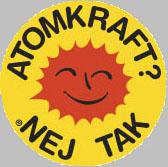Renewable Energy, Conservation, and Energy Policy
|
Planet of the Humans This movie about why clean, cheap renewable energy is bad for us came not directly from the fossil-fuel industry, but roundabout somehow, with the assistance of Jeff Gibbs and Michael Moore portraying themselves as latter-day know-nothings. See some comprehensive critiques of the film here and here. May 2020 Why Carbon Capture Doesn't Work Too expensive, especially compared to the alternatives (namely, energy efficiency and renewable energy sources.. By James Hansen, June 12, 2018 The Carbon Brief Interview A comprehensive look at opportunities for clean energy, by the foremost thinker in the field. Amory Lovins, June 8, 2017 Solar Roadways produces specially-engineered photovoltaic panels that can be walked and driven upon. It will be interesting to see how this works out. October 2016
We have met the wrong enemy Seven Surprising Realities Behind the Great Transition to Renewable Energy The global transition to clean, renewable energy and away from nuclear and fossils is well under way, with remarkable developments happening every day. The Great Transition by Lester Brown, Janet Larsen, Matt Roney, and Emily Adams lays out a tremendous range of these developments. May 13, 2015 Putting a price on carbon in Washington State (video) Presentation by K.C. Golden, Climate Solutions, January 2015 Public opinion estimates on global warming Yale Project on Climate Change Communication, 2014 The Disinformation Campaign against Renewable Energy Some mainstream media around the world publish misinformed or, worse, systematically and falsely negative stories about renewable energy. By Amory Lovins, Rocky Mountain Institute, July 31, 2013 Ramping Up Renewables: Energy You Can Count On The United States can significantly increase renewable energy while maintaining a reliable, affordable, and cleaner energy system. Union of Concerned Scientists, April 2013 Full Cost Accounting for the Life Cycle of Coal Each stage in the life cycle of coal—extraction, transport, processing, and combustion—generates a waste stream and carries multiple hazards for health and the environment. These costs are external to the coal industry and are thus often considered “externalities.” The authors estimate that the life cycle effects of coal and the waste stream generated are costing the U.S. public a third to over one-half of a trillion dollars annually. Many of these so-called externalities are, moreover, cumulative. Accounting for the damages conservatively doubles to triples the price of electricity from coal per kWh generated, making wind, solar, and other forms of non-fossil fuel power generation, along with investments in efficiency and electricity conservation methods, economically competitive. By Paul Epstein, et al, Annals of the New York Academy of Sciences, February 2011 (PDF)
The Prius Strategy: How to Displace Iraqi Oil with
Energy Efficiency.
More Profit with Less Carbon Security Meltdown Debunking the nuclear theology. Nuclear power worsens the climate problem, because every dollar spent on costly nuclear power instead of cheaper options buys less coal displacement. For example, if a new nuclear plant delivered a kWh for only three times the cost of saving a kWh (the actual difference is typically much larger), then for the cost of your one nuclear kWh, you could have saved three kWh, tripling your carbon reduction. By Amory Lovins, Rocky Mountain Institute, Summer 2005 Gas Guzzling Food We use about as much energy to grow our food as to power our homes or fuel our cars. By Thomas Starrs, American Solar Energy Society, July 2005
U.S. Must Kick The Habit - Conservation Measures More Effective Than Seeking
New Oil Fool's Gold in Alaska By Amory B. Lovins and L. Hunter Lovins, Rocky Mountain Institute, Spring 2001. The many ways in which oil development in the Alaska National Wildlife Refuge would worsen our energy security, and the wealth of energy-efficient alternatives. (PDF) Bush's Energy Policy May 20, 2001 The California Energy Crisis: Dubya Wins a Nobel Prize By John Hulls, February 22, 2001
How Not to Parachute More Cats By Amory and Hunter Lovins, 1996 Energy Strategy: The Road Not Taken? This article, as visionary today as it was when published, brought modern ideas on energy efficiency and resources ("soft energy paths") to the public eye. By Amory Lovins, Foreign Affairs, October 1976 |
|
|
|
|
||
|



